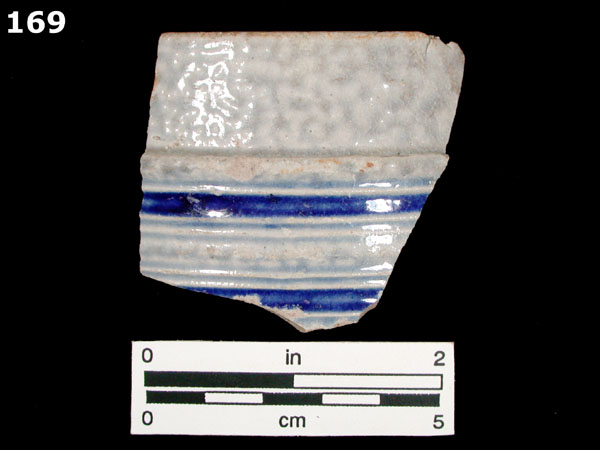Mira todos los ejemplos de STONEWARE, RHENISH BLUE AND GRAY

| Nombre Tipológico: | STONEWARE, RHENISH BLUE AND GRAY |
| Índice del Tipo: | STONEWARE |
| Lugar de Producción: | GERMANY, RHINE VALLEY |
| Fecha de Producción: | 1575-1775 |
| Definir Atributos: |
Very hard, compact and vitreous stoneware paste. Color is most commonly gray, although grayish-tan paste also occurs. Surface is salt-glazed, producing a shiny, gray, pebbly or “orange peel” finish. Vessels are decorated with cobalt blue or manganese underglaze paint, in combination with applied molded relief ornaments (sprig molds), incising, stamping, and rouletting. Common stamped designs included hearts, circles, triangles, and floral motifs. See Comments and references below for chronological subdivisions based on decoration. |
| Forma del Recipiente: |
CHAMBER POT JAR MUG |
| Comentarios: | Blue and gray stoneware developed in Raeren in the mid-16th century, and early examples have been reported from Spanish colonial sites. Primary production shifted to the Westerwald region by the end of the 16th century, and Westerwald blue and grey stonewares dominated exports after that time. Westerwald wares were characterized by elaborate floral and geometric designs in a combination of sprig moulding and combed lines. By the second quarter of the 18th century, the decorations on Westerwald-type pieces were becoming more schematic, relying on incised foliage, scrolls, and animals, with the outlines filled with blue. Chronological indices include: Molded human figures and portraits: 1575-1630; Sprig-molded and incised floral and geometric designs colored in cobalt blue: 1650-1725; Managanese purple:1650-1775; Stamped and incised central medallion design with blue: 1700-1775; Royal ciphers: WR (William III, 1688-1702) AR (Queen Anne, 1702-1714) or GR (George I & II , 1714-1760) |
| Definiciones Publicadas: | Noel Hume 1970, 2001; Gaimster 1997; Klinge 1996 |